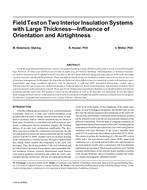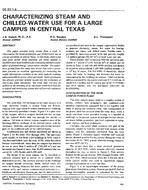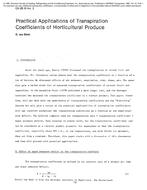Track: HVAC&R Systems and Equipment
Sponsor: 5.3 Room Air Distribution
Chair: Matt Bhumbla, Member, Price Industries, Suwanee, GA
This seminar discusses the evolution of underfloor system design over the last 20 years. Early design practices and challenges are discussed and how some of those challenges led to the invent of the latest systems and their application. Project related CFD results are also shared to review how the new way of designing is pushing the envelope with energy savings. The presentation also covers items that engineers need to be aware of while applying these systems. The importance of a collaborative approach is discussed to achieve the best possible integration with building structure and services.
1. Top Five Application Considerations for Successful UFAD Systems
Jim Megerson, P.E., Member, Design Mechanical Inc., Kansas City, KS
Presentation content includes items that engineers need to be aware of so that obstacles to a successfully operating system can be avoided. UFAD systems are highly integrated with other services and more closely couple with the building structure than compared to traditional overhead mixing systems. This inherent characteristic of UFAD systems demands an integrated and collaborative approach when working on these types of projects. This seminar addresses issues that need attention and sometimes get overlooked when designers treat UFAD projects similar to overhead mixing system during design.
2. Underfloor System Design Evolution
Dan Nall, AIA, Fellow ASHRAE, Syska Hennessy, New York, NY
The major challenge for design of underfloor air distribution systems is the reconciliation of comfort requirements between the interior and perimeter zones served by the system. For a variety of reasons, the past UFAD design strategy has proved less effective. Newer strategies have been proposed and applied to overcome this issue. Each of these strategies has implications for the building architecture, first cost and performance for specific weather conditions. Some strategies may even be used together. This presentation reviews each of these strategies, discusses their benefits and limitations and presents energy modeling results for the strategies for a large office project.
Presented: June 26, 2017, 9:45-10:45 AM
Run Time: 60 min.
This is a zip file that consists of PowerPoint slides synchronized with the audio-recording of the speaker (recorded presentation), PDF files of the slides, and audio only (mp3) for each presentation.
Citation: ASHRAE Seminar Recordings, 2017 ASHRAE Annual Conference, Long Beach , CA
Product Details
- Published:
- 2017
- Units of Measure:
- Dual
- File Size:
- 1 file , 69 MB
- Product Code(s):
- D-LB17Sem26


